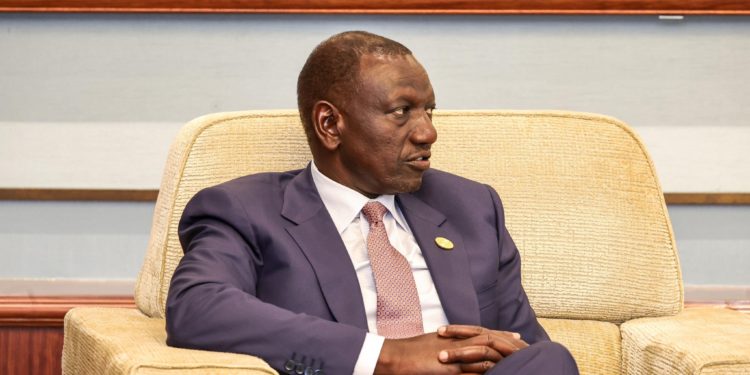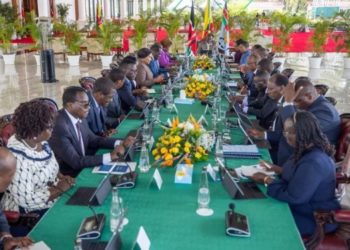A labor agreement between Kenya and Germany, hailed by Kenyan President William Ruto as a breakthrough providing 250,000 job opportunities for young Kenyans, has been called into question by German authorities, who deny any such quota exists. The conflicting statements have sparked confusion over the true scale of the deal and whether it will deliver the promised jobs.
During an interview with Deutsche Welle, Ruto declared that the agreement with Germany would address both Germany’s labor shortages and Kenya’s surplus workforce. “This agreement will unlock 250,000 job opportunities for young people from Kenya,” he said, framing the deal as a win-win scenario. He explained that while Germany faces a labor deficit, particularly in technical sectors, Kenya has a surplus of skilled workers needing employment.
However, this optimistic claim was swiftly contradicted by Germany’s Federal Ministry of the Interior and Homeland. In a tweet posted on Saturday, the ministry stated: “This information is clearly false. The agreement between Germany and Kenya does not include any numbers or quotas of skilled workers who will have the opportunity to work in Germany. All applicants must fulfill the strict requirements of the German Skilled Immigration Act.”
The conflicting accounts have raised questions about the actual scope and impact of the agreement. Germany, which has been grappling with labor shortages in industries like healthcare and engineering, has indeed sought to attract skilled workers from non-EU countries. However, the German immigration process remains highly regulated, with stringent requirements for applicants, including qualifications and language skills.
This discrepancy leaves the Kenyan government in a delicate position, as Ruto’s bold announcement had positioned the labor deal as a key solution to Kenya’s pressing youth unemployment problem. “We are injecting into the labor market a million young people every year, and even if we created half a million jobs in Kenya, we would still have another half a million who don’t have those opportunities,” Ruto said, justifying the need for such international agreements.
The president further linked the labor deal to broader economic strategies, including a domestic climate resilience project that aims to create 200,000 jobs within Kenya. The initiative, launched shortly before Ruto’s trip to Germany, targets vulnerable communities and is part of his administration’s efforts to diversify job creation across multiple sectors. “These are different opportunities that serve the same purpose of making sure that we give our young people in Kenya the opportunity to work,” Ruto explained.
This uncertainty over the labor agreement comes as Ruto’s administration faces increasing public pressure at home over economic hardships and rising living costs. Recent protests, partly triggered by tax hikes, have put the government on the defensive, with Ruto emphasizing job creation as a key way to ease tensions. “The protests were about opportunities,” Ruto said, addressing the unrest, adding that his government is working to improve livelihoods through both local and international initiatives.
In addition to the labor deal, Ruto discussed Kenya’s growing engagement with international partners, including China, the U.S., and Europe. He stressed that Kenya would continue to pursue a balanced approach, seeking opportunities with both the West and the East. “We are facing forward because that is where opportunity is,” he said, rejecting the notion of aligning exclusively with one bloc or another.
Ruto also acknowledged Kenya’s significant debt burden, which has ballooned to over KES 10 trillion. While he defended his administration’s handling of the debt, he emphasized the need for concessional funding to manage the crisis, highlighting ongoing negotiations with partners such as Germany, China, and the U.S. “Many people expected Kenya to have defaulted by now, but I promise them that it will not happen under my leadership,” Ruto stated.
For now, it remains unclear how many young Kenyans will actually benefit from the agreement, and whether the discrepancies between the two governments’ statements will be resolved. The truth behind the labor deal—and its potential impact on Kenya’s economy—remains to be seen.


















